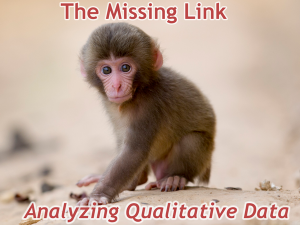Columnist Casie Gillette recaps a session from SMX Advanced on how to identify and respond to algorithm updates in an era where they are rarely announced or confirmed by Google.
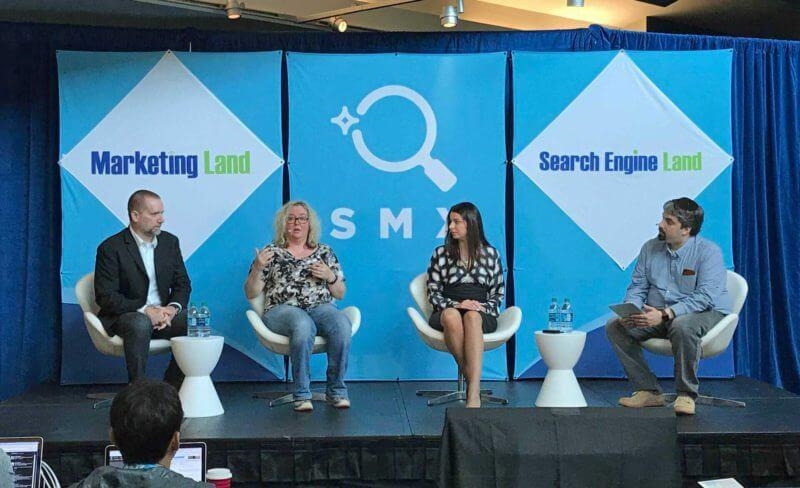
Times have changed. Gone are the days of yearly algorithm updates that would upend the search results and leave us scrambling. These days, it’s common to see ranking and traffic changes on a daily or weekly basis — and when it comes to algorithms, Google rarely even confirms updates. In fact, according to Olga Andrienko, Head of Global Marketing at SEMrush, of the 28 updates SEMrush tracked this year, only two have been confirmed by Google.
What does this mean for SEOs? Without guidance or transparency from Google, how should we react to ranking changes or possible penalties, and what should we be aware of?
Search experts at SMX Advanced last week tackled these questions in a session titled, “Dealing With Algorithm Updates: What Advanced SEOs Need To Know.” Andrienko and fellow panelists Marie Haynes (Owner, HIS Web Marketing) and Jeff Preston (Senior Manager, SEO, Disney Interactive) provided some tips and checklists to help SEOs better identify penalties, assess traffic drops and take action when needed. Let’s take a look.
It’s not you, it’s me
According to the panelists, just because you saw a big traffic or rankings loss on a day where an algorithm update hit, that doesn’t mean you were penalized. In fact, it’s probably not a penalty at all.
As both Haynes and Preston noted, there are a number of things that can lead to a sudden decrease in traffic: site redesigns, site updates, analytics adjustments, and more. When in doubt, it’s probably you, not Google.
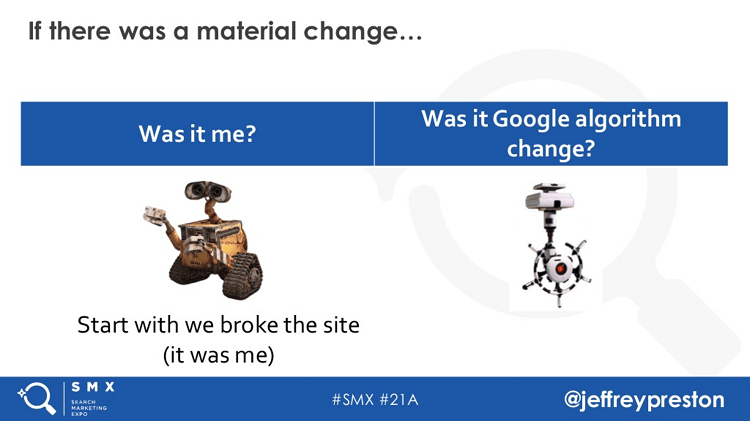
Before assuming you were penalized, identify any changes that were made on your site. Talk to the QA team, check tech team activity, talk to the content team — whoever has the power to make updates to the site should be your first line of communication.
Speakers also noted that it’s important to know your data to be able to make a true assessment. Haynes gave us a checklist of things to look into:
- Check Search Console. If you are assessed a manual penalty, you’ll see it in there.
- Determine which pages saw traffic drops. If you are just seeing one page being impacted, it’s not an algorithm change.
- Check all organic traffic data. If you were impacted by an algorithm update, you should only see an impact in Google.
- Look at your competitors. Did your competitors see any changes? Algorithm updates tend to target certain types of search results and industries. Take a look at competitor rankings.
At the end of the day, you may not have been hit with a penalty at all, and it’s important to look at all of the other factors that might lead to a drop in traffic first.
Tools can guide us
If you work in the SEO space, you know there are tools for just about everything, including SERP volatility. And as Andrienko pointed out, they all have a number of benefits.
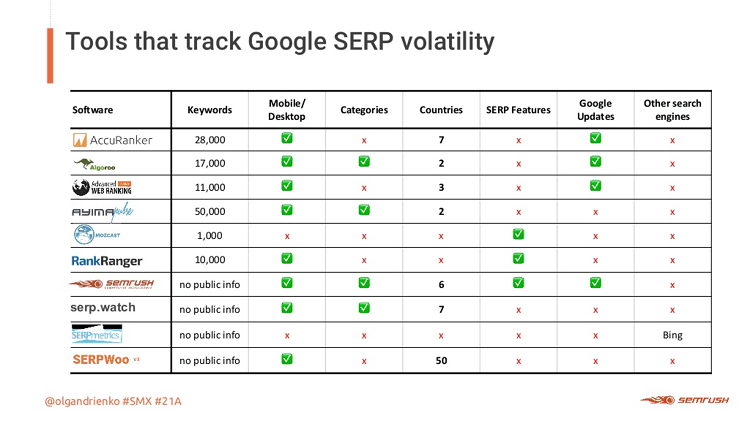
But tools can only take us so far. We have to account for the fact that some industries simply fluctuate more than others, or that mobile results tend to fluctuate more than desktop. As Andrienko showed, sports results are almost always different depending on what’s happening that day. The same goes with entertainment and news.
Tools are a good way to track site performance, and while it’s always interesting to see the changes in SERPs, make sure you are looking at the big picture. Look beyond your own site to see how your overall industry is performing and being impacted. And as noted above, just because a tool shows us SERP fluctuations, it doesn’t mean you were penalized.
Be liked & be valuable
If Google can figure out which sites you like, why can’t they figure out what sites everyone likes? I loved this idea from Haynes and what it implies: Google wants to provide users with the best possible experience. It wants to give users what they are looking for, and the updates we are seeing now are geared to do that.
Case in point: Preston noted Disney removed 80,000 low-quality pages and got a boost in organic traffic. Most sites that remove content don’t see a jump in organic; however, because the majority of these pages were low-quality and receiving ~1 visit per month, they weren’t helping the site in any way.
Haynes also focused on E-A-T (Experience, Authority, Trust) and noted that if you don’t pursue these things, you are going to be outranked by competitors who do.
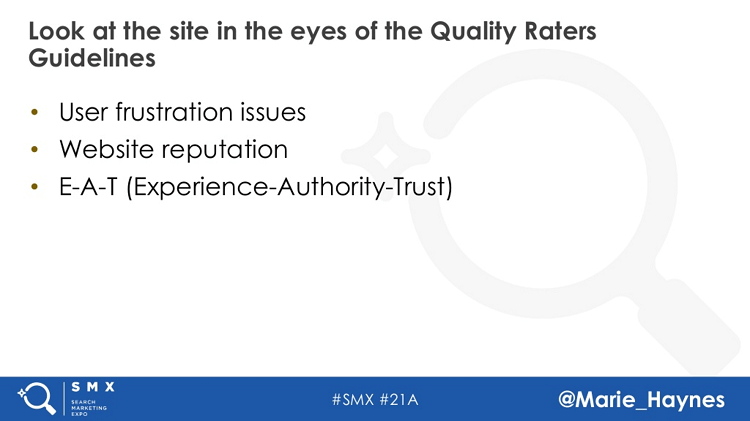
She also discussed the idea that certain people and/or brands have EAT for certain ideas, and Google is looking to put those things together.
Wrap-up
The speakers did a fantastic job covering what to look for, how to find information and what to do if you are penalized. But one of the key pieces of advice throughout it all was to talk your industry friends. If you are seeing changes or weird occurrences, ask others in the search space, and they’ll likely be able to point you in the right direction.
And at the end of the day, just make your site better. If you think you are doing something that might drive a penalty, stop and fix it. If you think your site can be improved, work on that. The search engines want to serve up quality, and it’s your job to give them that.
Couldn’t make SMX? Be sure to check out the presentations from each of the speakers below:
[Article on Search Engine Land.]
Some opinions expressed in this article may be those of a guest author and not necessarily Marketing Land. Staff authors are listed here.
Marketing Land – Internet Marketing News, Strategies & Tips
(105)
Report Post




